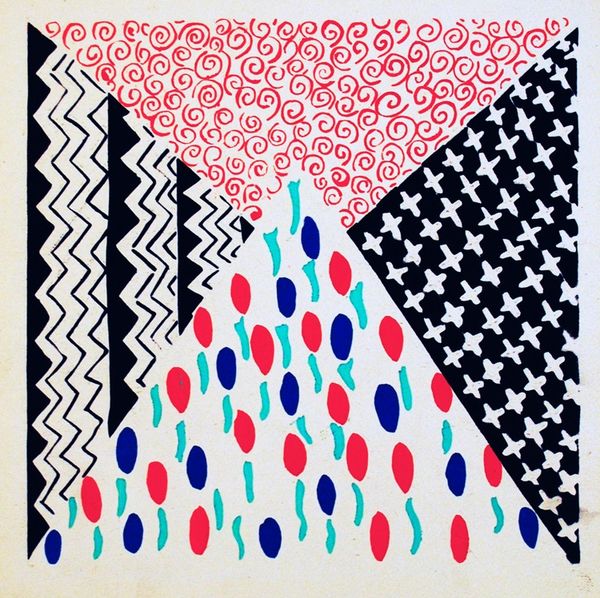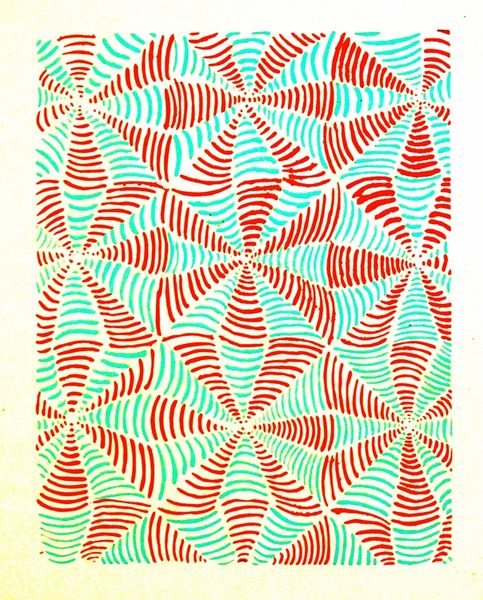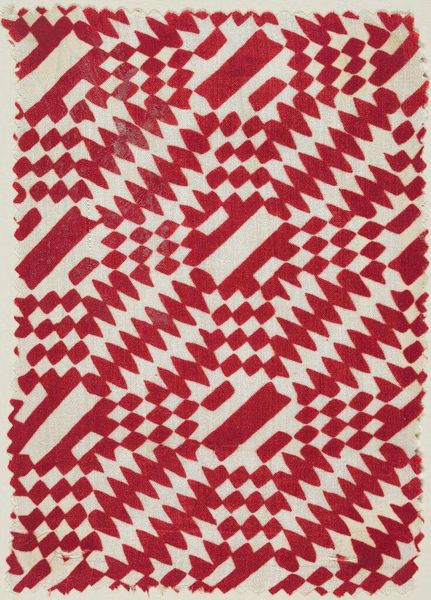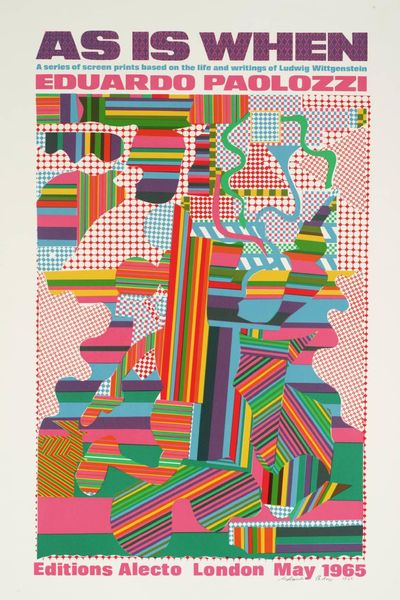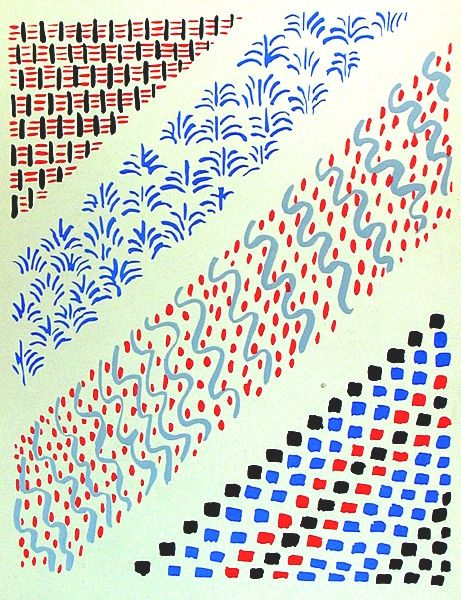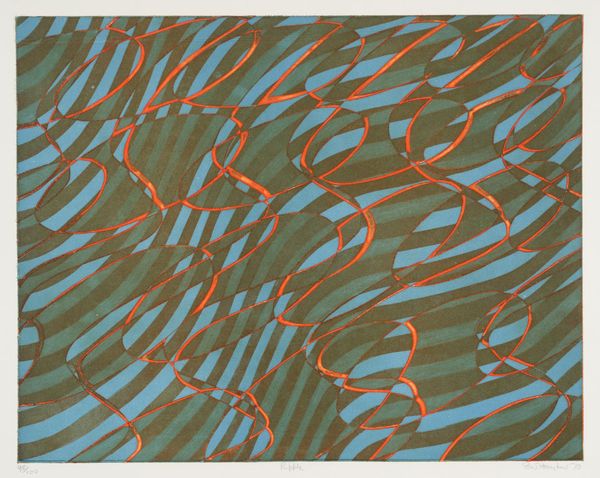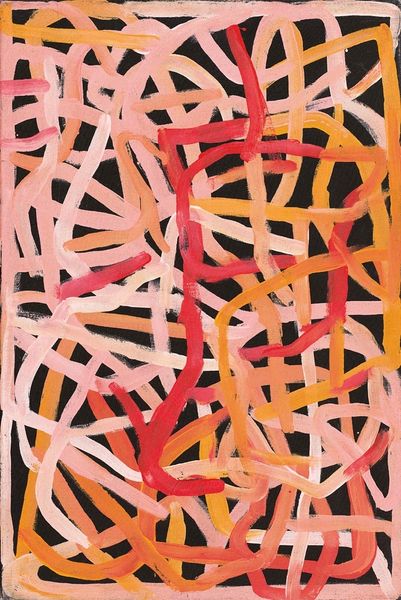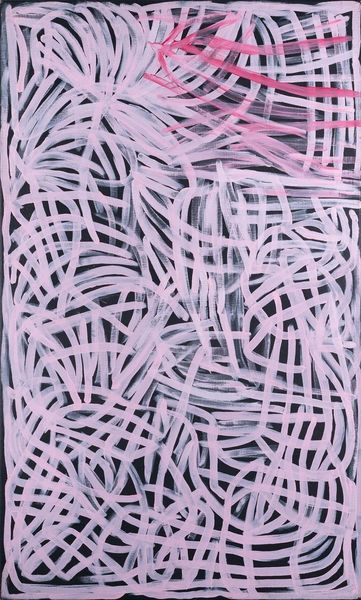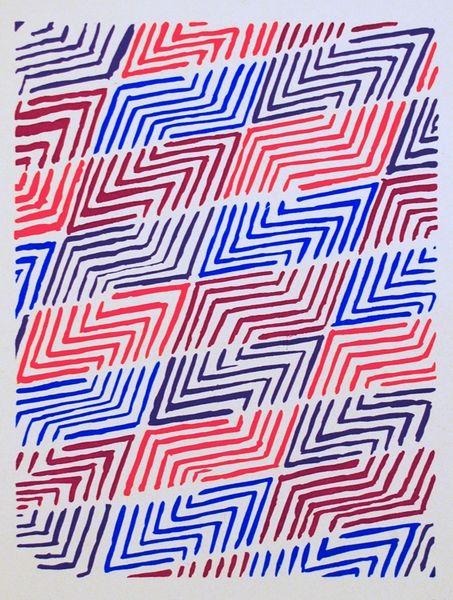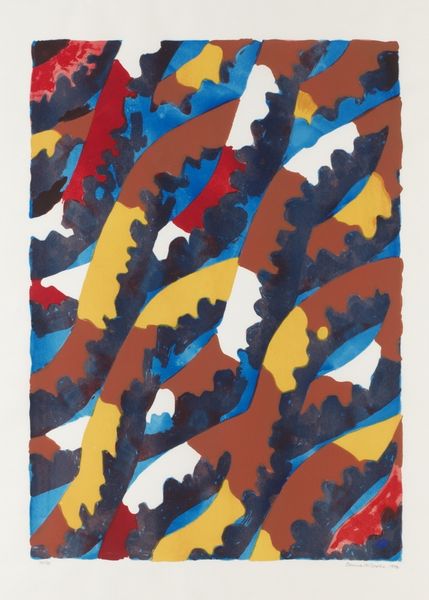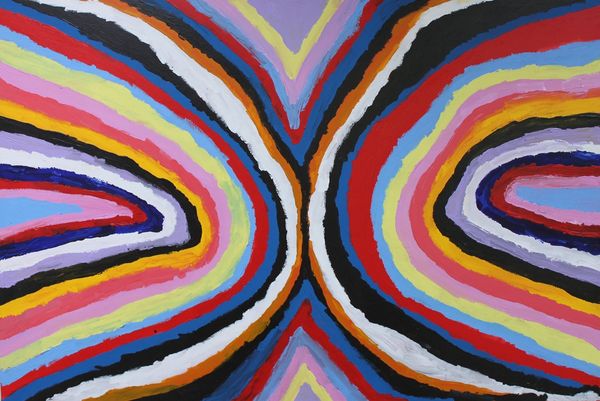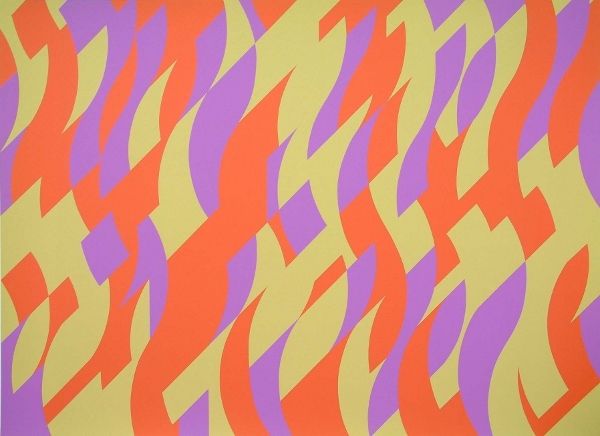
#
art-deco
#
cubism
#
geometric
#
abstraction
#
line
#
modernism
Copyright: Sonia Delaunay,Fair Use
Editor: This is "Composition 21," created by Sonia Delaunay in 1930. The use of line and the color scheme, primarily red, blue, and black, are really striking. It almost looks like a textile design to me. What catches your eye when you look at this piece? Curator: Considering the period and Delaunay's context, I immediately think about the industrial applications of art, the intersection between design, craft and so called 'high art'. This piece isn’t simply about representation; it seems to be a diagram of manufacturing, of repeated, almost mechanical patterns. Do you notice the implied movement from one area to the other, almost like stages in a process? Editor: I see what you mean! It’s like following a manufacturing process line: from raw materials, which could be the red dots, through different stages until you reach some sort of product at the end represented with those stylized blue trees. Did the artist perhaps see her work also like some kind of serial manufacture? Curator: Exactly. It disrupts the preciousness often associated with art, aligning more closely with the era's exploration of industrial design, textiles and their broad dissemination. What about the material execution makes you consider it as close to textiles? Is it simply the flatness of design and lack of perspective that gives you this impression? Editor: It's the overall impression; the density of the patterns almost screams woven. Knowing it was designed in 1930 also makes me think about mass production in general. What materials would you consider she was using? Is it print, perhaps? Curator: Considering the date, it may well be print as she was actively involved in multiple collaborative projects to extend her imagery to the decoration of everyday objects. To think about distribution methods, techniques and patronage really anchors this to her time. How does knowing this alter your first impressions? Editor: It makes me think about it less as an isolated piece and more as part of a larger creative and commercial undertaking, which makes it much more exciting. Curator: Precisely! Delaunay transcends those conventional categorizations this way. It opens your eyes about challenging hierarchies of artistic labour.
Comments
No comments
Be the first to comment and join the conversation on the ultimate creative platform.
